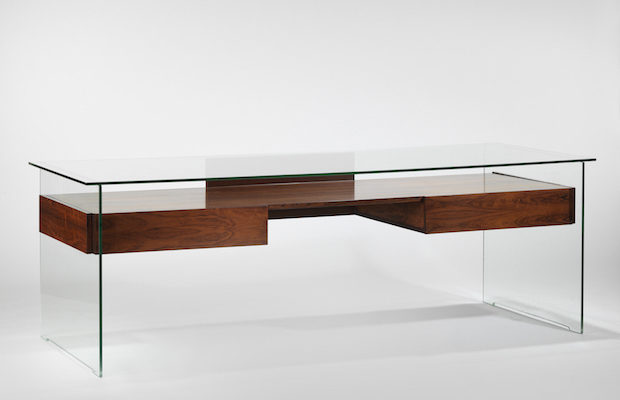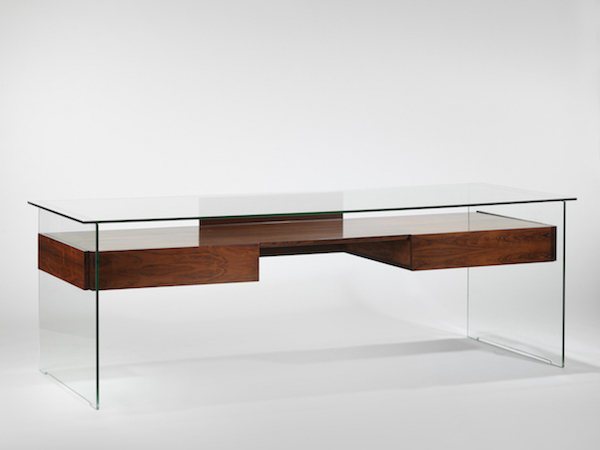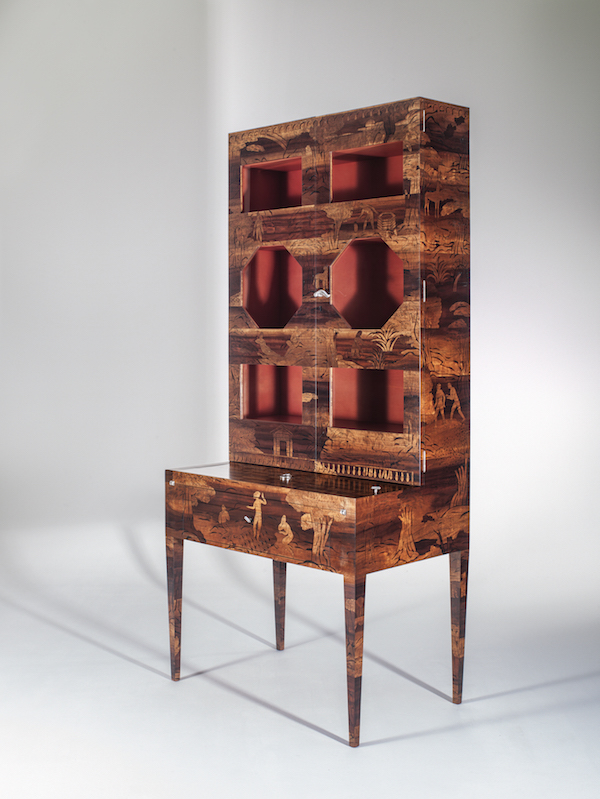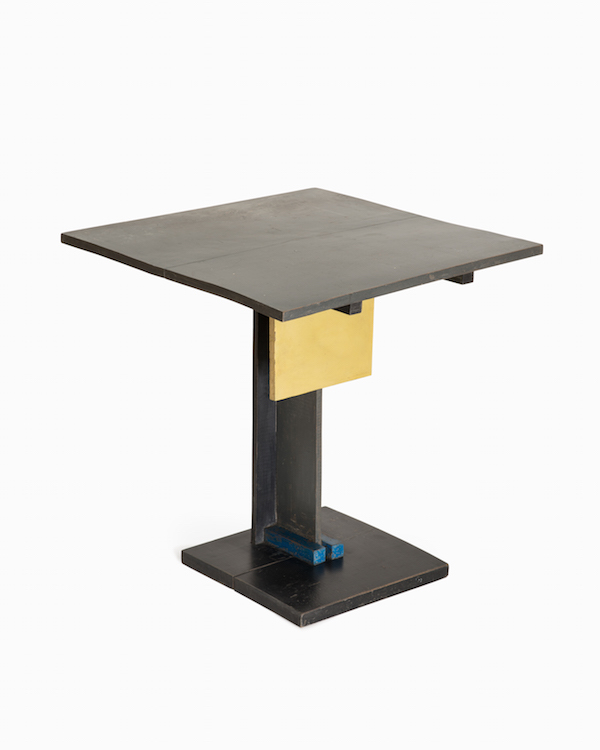 Joseph Andre Motte, Glass Desk, 1963, was the top seller in the Demisch Danant booth. Courtesy Demisch Danant.
Joseph Andre Motte, Glass Desk, 1963, was the top seller in the Demisch Danant booth. Courtesy Demisch Danant.
Design
TEFAF Design Report
The close of The European Fine Art Fair (TEFAF) last Sunday provided few answers about the health and direction of the design market. The fabled Maastricht, Netherlands–based show, which celebrated its thirtieth anniversary this year, may be best known for its peerless offerings of Old Master works, but in recent years it has also become an important destination for collectors of modern and contemporary design, as the fair has been slowly but diligently expanding that category. This year’s exhibitors in every category had wildly varied experiences, with some scoring a series of important sales and others grumbling about a lackluster market.

Joseph Andre Motte, Glass Desk, 1963, was the top seller at the Demisch Danant booth. Courtesy Demisch Danant.
It was hard to discern a trend from these erratic results. For example, Ulrich Fiedler, the distinguished Berlin-based dealer in 20th century design, presented an impressive assortment of De Stijl paintings and furnishings — this is the centenary of the influential Dutch movement — but it didn’t excite collectors. When asked how he had done overall, he reported “okay.” He felt that Maastricht’s draw for design collectors had been diminished by its governing foundation’s expansion to New York —TEFAF New York Fall launched at the Park Avenue Armory last October with offerings from antiquity to 1920, and will present modern and contemporary works this May at TEFAF New York Spring in that venue.
Nadia Favori, a representative for the renowned Galerie Downtown in Paris, also felt that the New York expansion had “had an impact on collectors…which was unavoidable.” But she went on to observe that it was not just “Americans but international and even French” who were absent from the show. “In addition,” she said, “there seems to be many fairs on a very short timeline with overlapping dates: TEFAF Maastricht, ArtBasel Hong Kong, TEFAF New York, Frieze NY! These international gatherings, which are numerous and too close together, can confuse the importance and choice of collectors.”

Uno Ahrén, The Garden of Eden, 1925. Cabinet made with a marquetry of Brazil walnut, eucalyptus, and tropical olive tree wood. Interior in ebony and coral leather, with handles, keys, and hinges in silvered metal. Courtesy Galerie Eric Philippe.
Without the presence of a vibrant collector base, one might have thought that the New York dealer Jason Jacques’s nervy booth mixing three antique examples of Japonisme with such recent creations as elaborate blue-and-white porcelain plaques depicting ornamental skulls and dismembered animal parts of the contemporary Japanese ceramist Katsuyo Aoki, twin minimalist benches with antler adornments by fashion designer Rick Owens, and a pair of Moss People by the Finnish ceramist Kim Simonsson might have been a hard sell. When this reporter dropped by Jacques’s booth in the early afternoon of the opening day, he was in the midst of telling a visitor that “if I were at Design Miami, these Moss People would have been sold by now! The collectors at TEFAF are so slow.” Yet by end of day, both of the Moss People, each priced in the $25,000 range, were sold, as was at least one of the Owens benches.
A New York dealer who wasn’t complaining about the Fair was Suzanne Demisch of Demisch Danant. Her exhibit presented the French modernist Jacques Dumond for the first time, which she said “received a positive and encouraging response.” Demisch didn’t think TEFAF’s New York expansion had diminished the event. “We see a different group of collectors in Maastricht, less Americans, but collectors from Germany, France, Belgium, China, etc.” And perhaps most interesting, she noted that most of her sales this year were to buyers new to her gallery.

Willem van Leusden, Side Table from the van Leusden Utrecht apartment, 1925. Constructed from five massive wood panels and five square sectioned slats, connected with wooden dowels and painted in black, grey, blue and yellow. Courtesy Galerie Ulrich Fiedler.
Two dealers offering vintage Swedish furnishings also did well. The Stockholm-based gallery Modernity, which was making its TEFAF debut, sold ten pieces, including an important Brazilian rosewood tabouret with handles (1954) by the Danish furniture maker Peder Moos. The captivating examples of Swedish art deco presented by the Paris-based dealer Eric Philippe also delighted collectors. Philippe himself was pleased to sell the booth’s pièce de résistance, an Uno Ahrén marquetry cabinet designed for the Swedish Pavilion of the Paris Decorative Arts Exhibition in 1925. He described it as “a wonderful example of the know-how and inspiration of the artists and designers of the Swedish Grace movement.” And so it was.
If any conclusions are to be drawn from Maastricht, it is that we are living in uncertain times and that is even being reflected in the design market.









